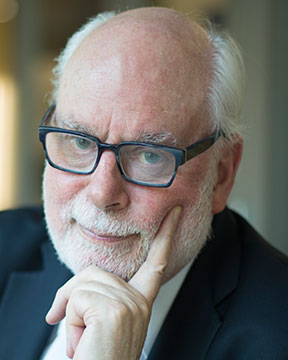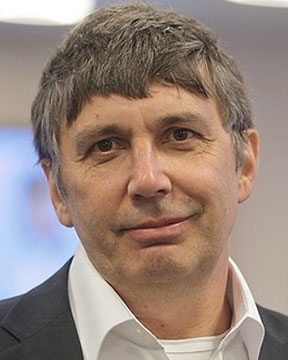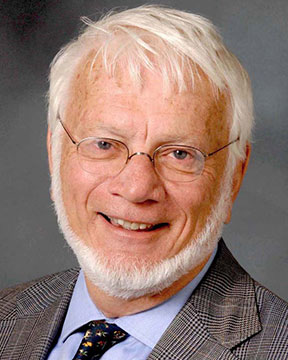ORALS
SESSION: BatteryMonAM-R9
| 5th Intl. Symp. on Sustainable Secondary Battery Manufacturing and Recycling |
| Mon Nov, 5 2018 / Room: Asian (60/3rd) | |
| Session Chairs: Vasant Kumar; Miles Freeman; Session Monitor: TBA |
11:20: [BatteryMonAM01] Keynote
Lead-acid Battery Recycling - A Different Way Athan
Fox1 ;
Miles
Freeman1 ;
Robert
Liu1 ;
Johdie
Harris1 ;
Vasant
Kumar2 ;
1Aurelius Environmental, Dudley, United Kingdom;
2University of Cambridge, Cambridge, United Kingdom ;
Paper Id: 426
[Abstract] The lead-acid battery (LAB) market is forecast to reach $84 billion USD by 2025.<sup>1</sup> Despite intense competition from alternative and emerging energy storage solutions, LABs continue to deliver the most proven, low-cost, safe and affordable option for electrical energy storage. Indeed, LABs are used widely in automobiles (for starting, lighting and ignition), traction and heavy industry (for example electric forklifts and trucks), telecommunications, emergency lighting, renewable energy systems, medical equipment, railway backup systems, oil and gas exploration, and more.<br /><br />The recycling of LABs via current methods is energy intensive and wasteful. In some parts of the world it produces "smelter smoke", a toxic mixture of sulphur dioxide, nitrogen dioxide and very often lead metal particles. For this reason, although LABs are the world's most successfully recycled commodity product,<sup>2</sup> and a perfect example of a successful multi-million tonne circular economy, the incumbent recycling processes are in dire need of improvement and technological innovation.<br /><br />At Aurelius, our aim is to revolutionise the art of recycling through science, ethical practice, sustainability and technology. Our vision is a web of industries, where one stream's waste is another stream's feed-stock: bridging linear and wasteful processes to create circular, energy efficient, non-polluting, zero waste industries. Our stepping stone towards this vision is a technology for the recycling of LAB paste.<br /><br />Invented in 2006 by Professor Vasant Kumar at the University of Cambridge,<sup>3-5</sup> UK, the technology was licensed exclusively in 2016 to Aurelius for further development, scaling up and commercialisation. Our piloting efforts are funded by two Innovate UK awards and a Horizon 2020 (Phase 2) SME grant. To date, we have raised more than 2 million USD in grant funding, while our annual turnover from the collection, dismantling and processing of more than 10,000 tonnes of LAB scrap per year is also used to fund our technology and innovation.<br /><br />The patented hydrometallurgical process, branded as Fenix<sup>Pb</sup>, brings about a critical improvement to the lead recycling industry.<sup>6</sup> It enables conversion of spent battery paste to leady oxide (Pb/PbO) without producing or handling an intermediate ingot, and without utilising electrowinning. In fact, our process reduces the carbon footprint by 80-89%; eliminates noxious gases (including sulphur dioxide) at no added cost; reduces slag by more than 90%; and produces energy (this is because a key stage in the process is highly exothermic, releasing rather than consuming energy).<br /><br />Our leady oxide is also a step-change in lead-acid battery technology. Laboratory tests carried out at the University of Cambridge have shown that batteries produced from our leady oxide have a 30% improved energy density. This innovation is largely due to the particle size; indeed, our advanced leady oxide is a nano-crystalline solid. Moreover, our process delivers a scalable means of controlling accurately the free metallic lead content (%Pb) and ratio between the alpha and beta phases of the oxide - enabling battery manufacturers to fine-tune their batteries' active materials dependant on its properties and applications.
References:
1) Lead Acid Battery Market Size & Trend Analysis By Product (SLI, Stationary, Motive), By Construction Method, By Application (Automotive, UPS, Telecommunication, Electric Bikes, Transport Vehicles), By Region And Segment Forecasts 2014 - 2025, Report ID 4076564, Research & Markets, January 2017 (URL: https://www.researchandmarkets.com/research/kvf4lb/lead_acid_battery)\n2) Lead Action 21, Environmental and social responsibility for the 21st Century, International Lead Association, November 2015 (URL: https://www.ila-lead.org/UserFiles/File/ILA9927%20FS_Recycling_V08.pdf)\n3) M.S. Sonmez, R.V. Kumar, Hydrometallurgy, 95 (2009), 82-86.\n4) M.S. Sonmez, R.V. Kumar, Hydrometallurgy, 95 (2009), 53-60.\n5) J. Yang, R.V. Kumar, D.P. Singh, J. Chem. Technol. Biotechnol., 87 (2012), 1480-1488.\n6) A. Fox and M. Freeman, SciTech Europa Quarterly, 28 (2018), 118-121.
SESSION: BatteryTueAM-R9
| 5th Intl. Symp. on Sustainable Secondary Battery Manufacturing and Recycling |
| Tue Nov, 6 2018 / Room: Asian (60/3rd) | |
| Session Chairs: TBA Session Monitor: TBA |
11:45: [BatteryTueAM02]
Hydrometallurgically Generated Nanostructured Lead(II) Oxide from discarded Lead-Acid Batteries: From Laboratory to Pre-Pilot Scale-up Robert
Liu1 ;
Vimalnath
Selvaraj2 ; Marcel
Yiao
2 ;
Vasant
Kumar3 ; Steve
Andrew
1 ; Spencer
Lowe
1 ;
Miles
Freeman1 ;
Johdie
Harris1 ;
Athan
Fox1 ;
1Aurelius Environmental, Dudley, United Kingdom;
2University of Cambridge, Cambridge, United Kingdom;
3University of Cambridge, Cambridge, United Kingdom ;
Paper Id: 429
[Abstract] The recycling of lead-acid batteries (LABs) is currently an energy intensive, inefficient and polluting procedure. An alternative hydrometallurgical recycling route using citric acid(1)(2) has been proven to effectively and efficiently facilitate the extraction of lead from discarded LAB paste material to form an intermediate that can be further processed to be potentially reused again in new LABs.
This citric acid route has been extensively trialled in the laboratory at the University of Cambridge and has recently been through several concurrent iterative experimental trials at a pre-pilot scale at Aurelius Environmental Ltd in Tipton, UK.
The procedure of scaling up any process from the laboratory to pilot and, if successful, to full commercial scale is a journey that is well trodden. The current review paper will seek to describe some of the challenges and successes that has thus far been encountered in scaling up this promising recycling route.
As the author, associates and collaborators attempt to translate what has been shown in the laboratory to a pre-pilot scale, the ultimate aim is to transition to a full pilot scale and beyond in the near future. The progress and future aims of this nascent technology will be outlined and discussed in order to inform and educate a wider audience of this exciting and sustainable recycling method.
References:
[1] Sonmez MS, Kumar RV. Leaching of waste battery paste components. Part 1: Lead citrate synthesis from PbO and PbO2. Hydrometallurgy. 2009;95(1-2):53-60.
[2] Sonmez MS, Kumar RV. Leaching of waste battery paste components. Part 2: Leaching and desulphurisation of PbSO4 by citric acid and sodium citrate solution. Hydrometallurgy. 2009;95(1-2):82-6.
[3] Yang J, Kumar RV, Singh DP. Combustion synthesis of PbO from lead carboxylate precursors relevant to developing a new method for recovering components from spent lead-acid batteries. Journal of Chemical Technology & Biotechnology. 2012;87(10):1480-8.



















